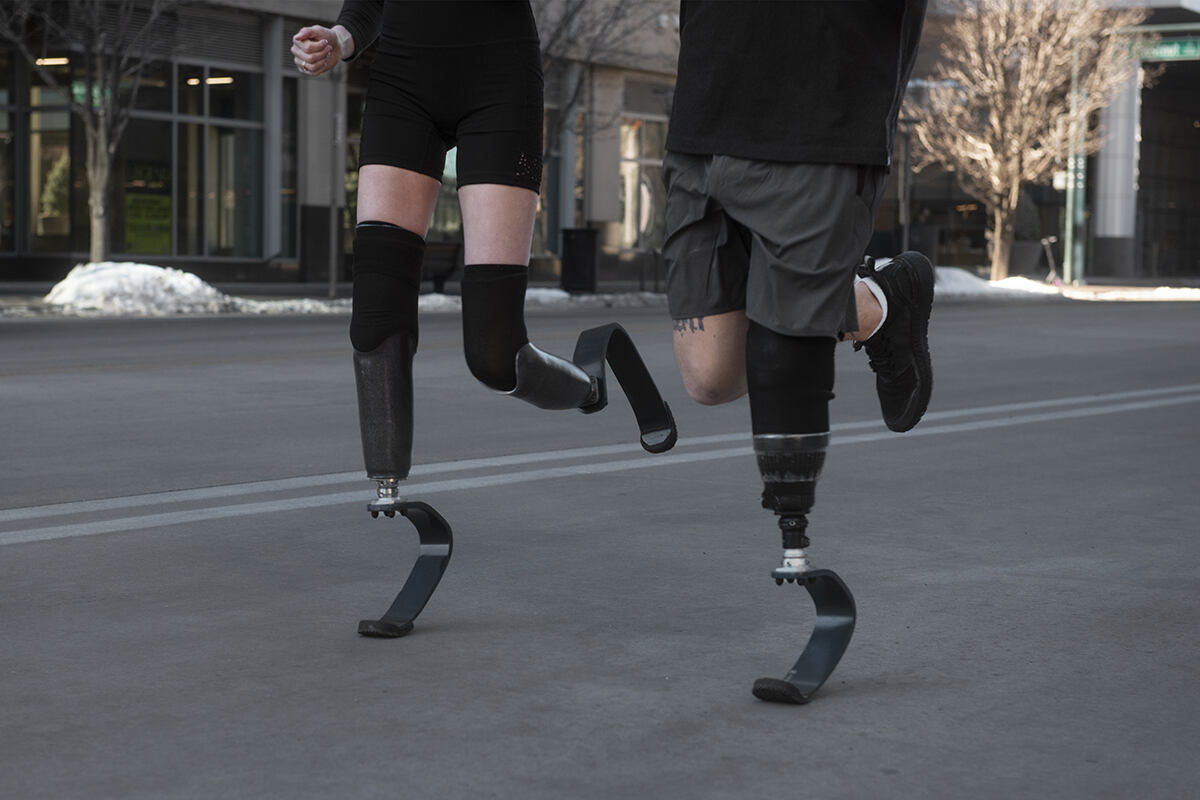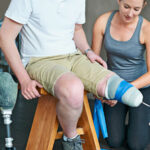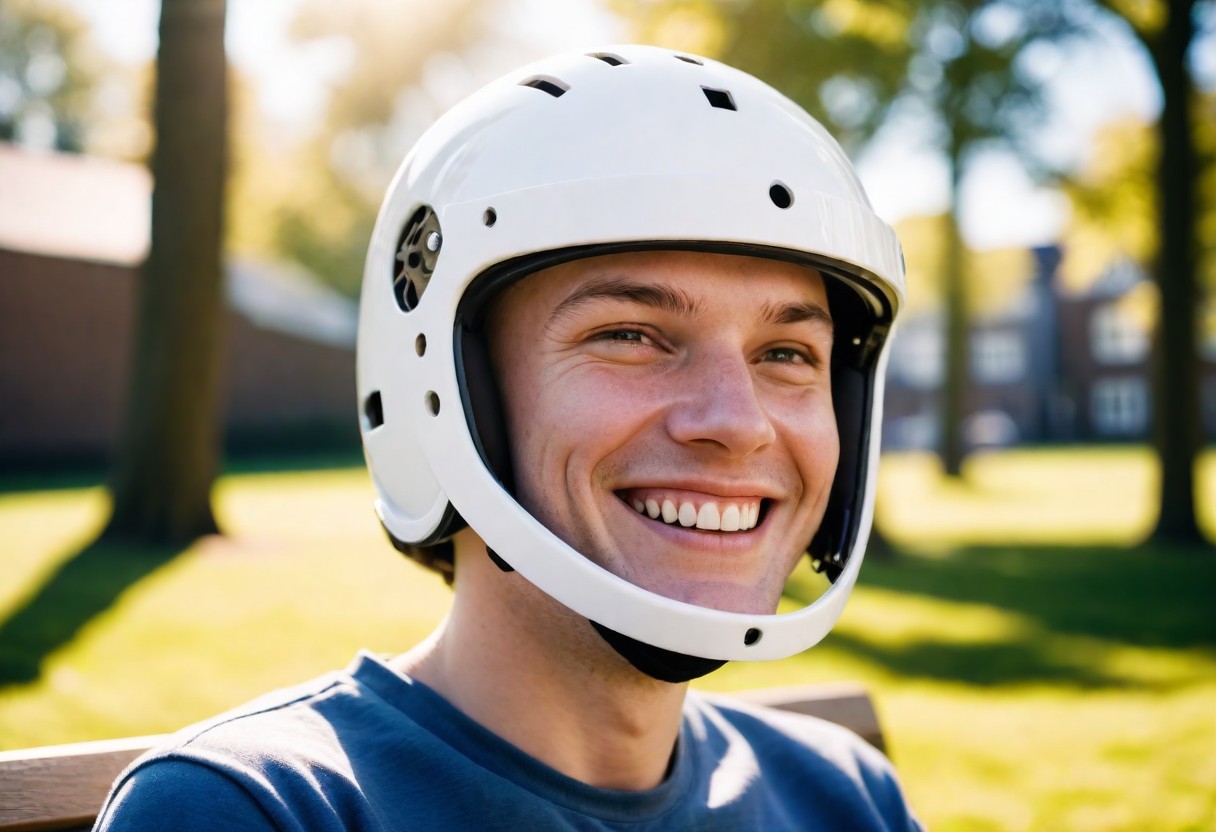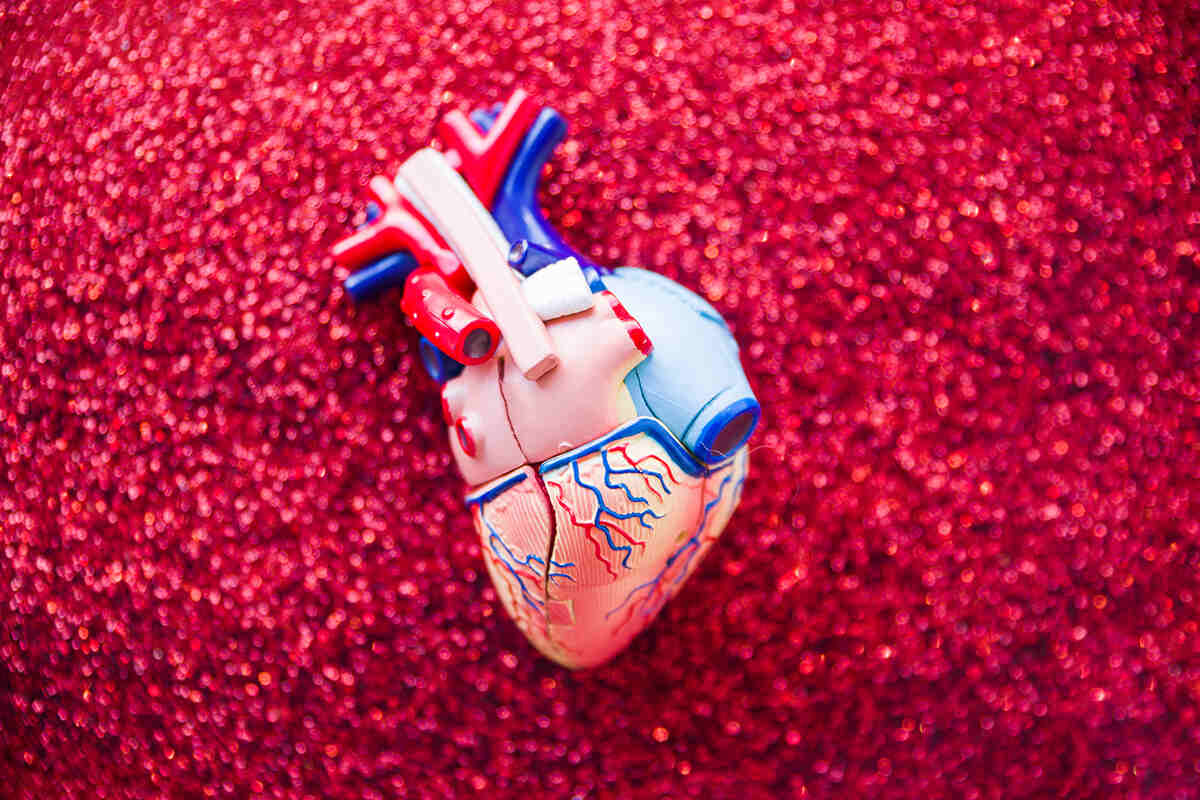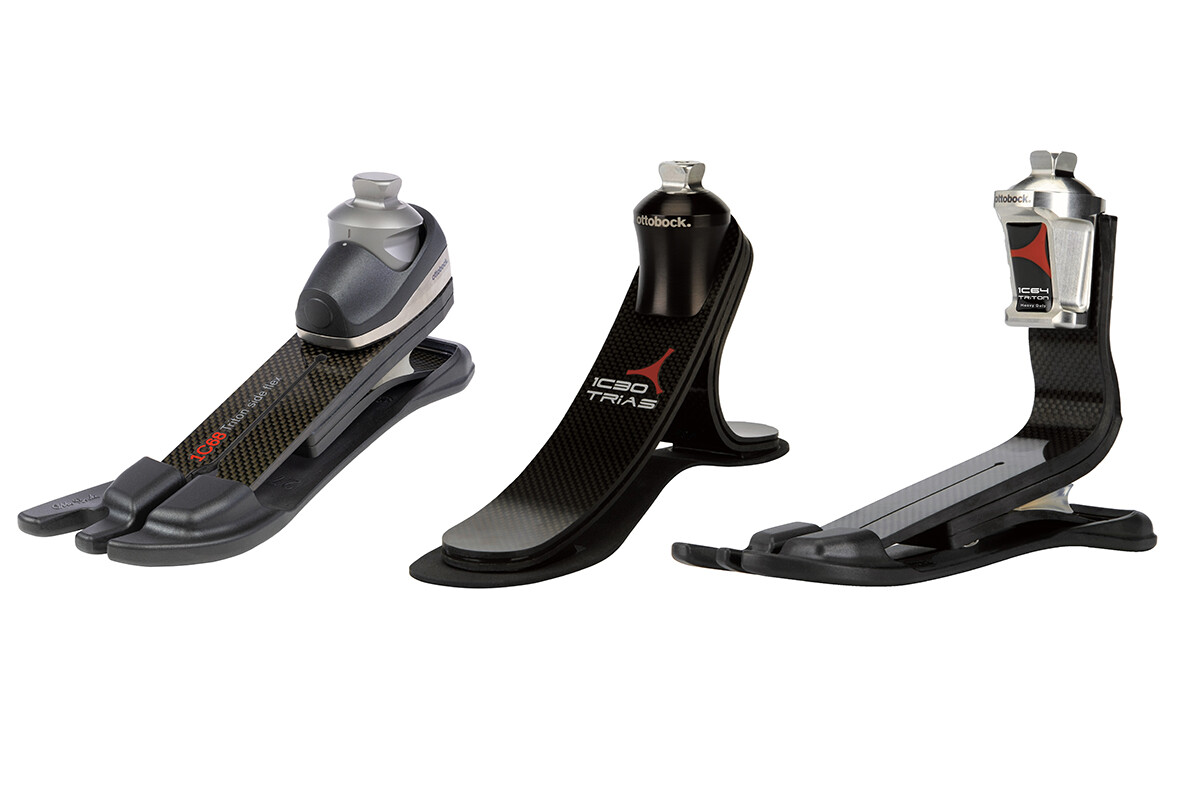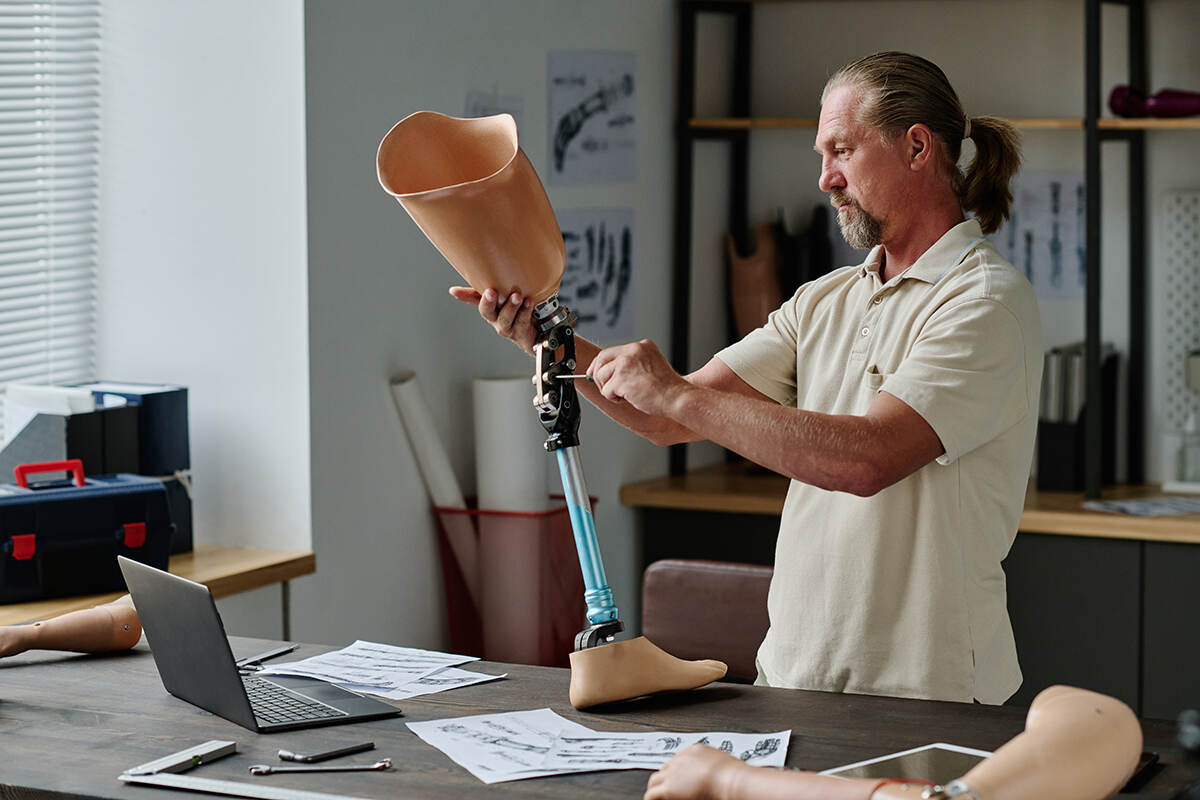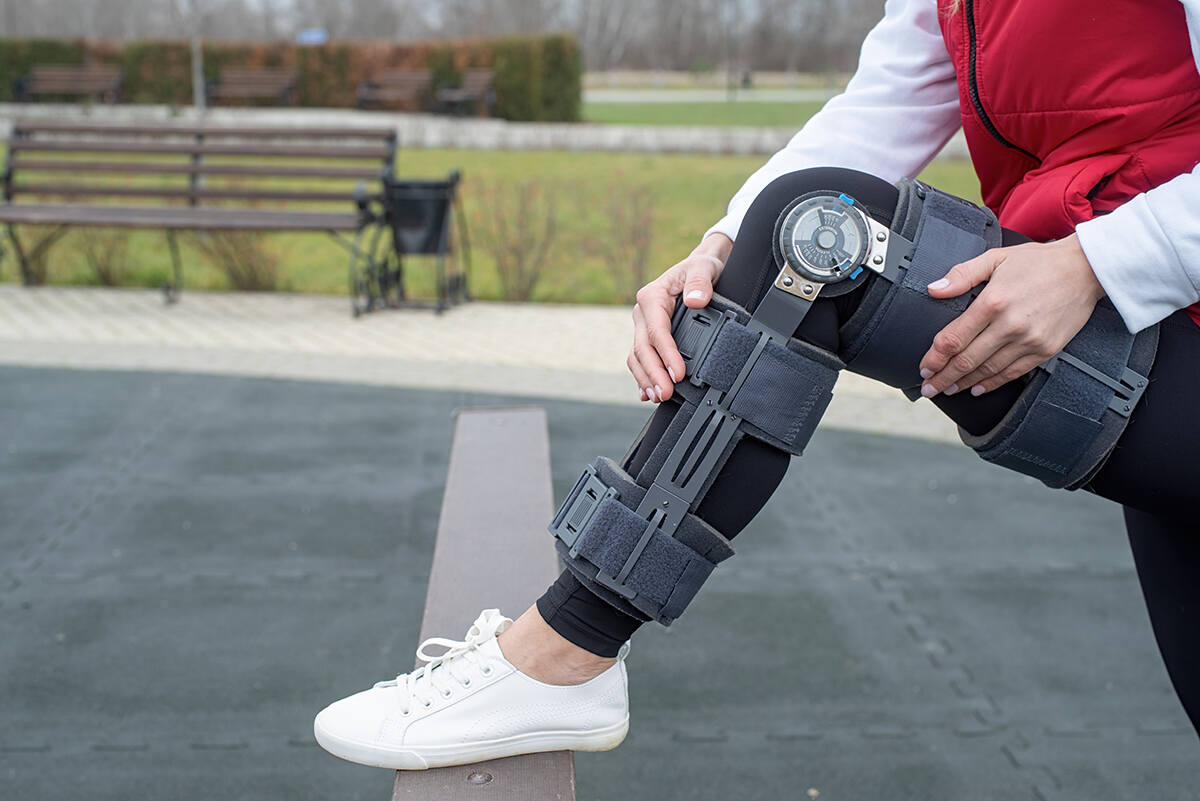What remains after an amputation is known as a residual limb. If you’re searching for a clear ‘residual limb definition,’ know that it is not just the physical remainder but a cornerstone for the use of prosthetics and recovery. This article will carefully navigate its anatomy, care, and the implications for prosthetics without overwhelming detail.
Key Takeaways
- A residual limb is the portion of the limb left after amputation and undergoes significant shape and volume changes post-surgery, affecting prosthetic fitting and rehabilitation.
- Managing residual limb pain involves medical treatment and home remedies, while addressing phantom limb pain is crucial for amputees to improve their quality of life through medical, physical, and psychological support.
- Prosthetic fitting is a dynamic process requiring ongoing adjustments due to changes in the residual limb, and rehabilitation is critical for enhancing functionality and quality of life after amputation.
Defining Residual Limb
A residual limb is the portion of the arm or leg that remains after an amputation. It acts as a connector to the artificial limb, playing an essential part in restoring mobility and functionality. Amputees need to understand the concept of a residual limb because it affects decisions related to the initial timing of an upper extremity prosthesis fitting, the necessity for a new prosthetic socket, and the need for a new prosthesis.
The residual limb undergoes significant changes in shape and volume during the post-operative period following surgical amputation, particularly during acute and post-acute recovery periods. Such changes highlight the need to understand and cater to the requirements of the residual limb, which play a key part in successful prosthetic fitting and rehabilitation.
Anatomical Perspective
The anatomy of a residual limb is composed of key components such as the socket, underlying soft tissues like fascia and tendon, and the muscle sutured to the bone for maximal strength retention (myodesis). In lower limb amputations, the knee joint may also be a substantial part of the residual limb. The residual limb’s anatomy greatly influences prosthetic fitting, affecting decisions related to the timing of the initial prosthesis fitting and the need for a new prosthetic socket.
The prosthetic socket, which encloses the residual limb, is influenced by the skeletal structure of the residual limb. This socket is vital for weight-bearing and load distribution. In higher-level amputations, the hip joint may also play a role in prosthetic fitting. Understanding the anatomical perspective of a residual limb aids in the successful incorporation of artificial limbs, including prosthetic knee joints, thereby enhancing mobility and quality of life.
Types of Amputations
The level of amputation can significantly influence the function of the residual limb and factors such as:
- functional performance
- knee flexion and extension strength
- the overall objective of achieving functionality, pain relief, and aesthetic appeal in the missing limb
For instance, individuals who undergo below-knee amputation, including partial foot amputation, generally exhibit improved mobility and quality of life when using a prosthetic limb compared to those with above-knee amputation. This is due to the preservation of the knee in below-knee amputations, which contributes to a superior functional recovery.
Hand and arm amputations, including traumatic amputation, involve the loss or partial removal of the hand or arm. Rehabilitation for these amputations aims to achieve functional, pain-free, and aesthetically pleasing residual limbs. Research shows that individuals utilizing upper extremity prosthetics following upper-limb amputation experience reduced disability compared to those who do not use a prosthesis.
Residual Limb Pain and Phantom Limb Pain
An important aspect of the amputee’s journey is the management of pain. Two common types of pain experienced are residual limb pain and phantom limb pain. The former pertains to the sensation of pain in the remaining part of the limb post-amputation, commonly referred to as the stump. On the other hand, phantom limb pain involves the perception of pain originating from the absent body part.
Pain management is a complex process, with residual limb pain resulting from factors related to the surgery or pre-existing conditions. Phantom limb pain, on the other hand, can range from mild to severe, impacting an amputee’s daily routines, sleep patterns, emotional state, and overall health. This can result in a diminished quality of life and heightened psychological strain.
Managing Residual Limb Pain
Management of residual limb pain can involve both medical treatments and home remedies. Medical treatments include pain relievers like acetaminophen, nonsteroidal anti-inflammatory drugs, and tricyclic antidepressants. Home remedies and strategies such as hot/cold therapy, gentle massages, acupuncture, biofeedback, and relaxation techniques may provide relief from the pain.
Correct prosthetic fitting is also essential in reducing residual limb pain. This can be achieved through the use of:
- Compression garments
- Elastic wraps
- Residual limb socks
- Light massaging
- Applying cold packs to the affected area
These measures help to promote a better fit and decrease swelling, thereby enhancing the comfort and functionality of the prosthetic limb.
Addressing Phantom Limb Pain
Phantom limb pain, sometimes referred to as phantom pain, is a unique phenomenon experienced following an amputation. It manifests as the sensation of genuine pain in the absent part of the limb. The exact cause of phantom limb pain is not fully understood. One plausible explanation is that when nerves in the spinal cord and brain no longer receive signals from the amputated limb, they reorganize, leading to the transmission of pain signals.
Efficiently managing phantom limb pain is vital for amputees to improve their quality of life. The management of this pain involves a combination of medical treatments, physical therapy, and psychological support. The process is aimed at not only relieving the pain but also empowering the individual to lead a fulfilling life despite the challenges.
Prosthetic Fitting and Residual Limbs
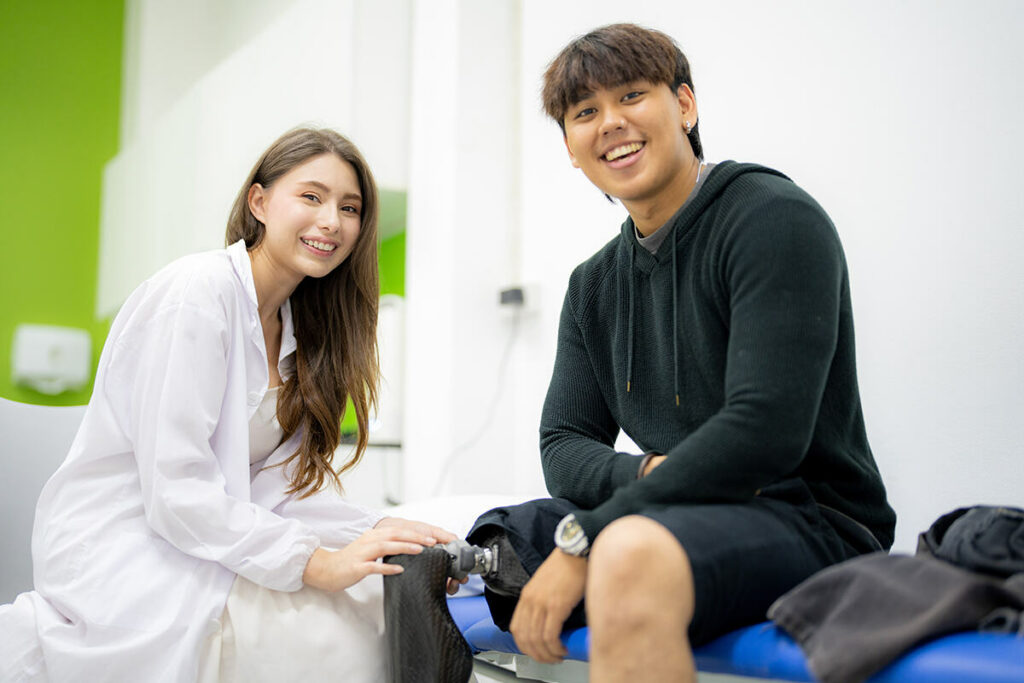
The fitting of a prosthetic limb is a critical step in the journey of an amputee. Key considerations for achieving a comfortable prosthetic fitting include the level of amputation, the materials used for the prosthetic, and attaining a proper fit tailored to the individual’s body. The prosthetic socket, connecting the residual limb to the prosthesis, is crucial in this process.
Prosthetic fitting extends beyond the initial setup. The residual limb is dynamic, undergoing changes in volume and shape, especially during the post-operative recovery periods. These changes necessitate periodic adjustments to the prosthetic fitting to maintain comfort and functionality.
Prosthetic Socket
The prosthetic socket is an integral component of a prosthetic limb. It serves to offer support, stability, and comfort to the residual limb. It is specifically tailored to provide a snug fit, thereby assisting in the even distribution of body weight.
The socket is individually tailored to provide a secure fit around the end of the residual limb, thus establishing a comfortable and functional connection between the limb and the prosthetic device. It’s important to note that in cases of above-knee amputations, the residual limb may experience movement within the socket, which could lead to inefficiencies in load distribution during dynamic activities.
Compression Sock and Limb Care
Compression socks are essential in maintaining the residual limb’s health and ensuring a comfortable prosthetic fit. They help to:
- Facilitate lymph flow
- Minimize tissue swelling
- Enhance circulation
- Lessen swelling
- Alleviate pain
Regular use of compression socks, with standard compressions of 20 to 30 mmHg, can maintain the shape of the residual limb and prepare it for a prosthetic limb. These socks exert uniform pressure on the residual limb, resulting in decreased swelling and improved shaping of the limb, ultimately leading to a more optimal fit for the prosthetic limb.
Rehabilitation and Adjusting to Life with a Prosthetic Limb
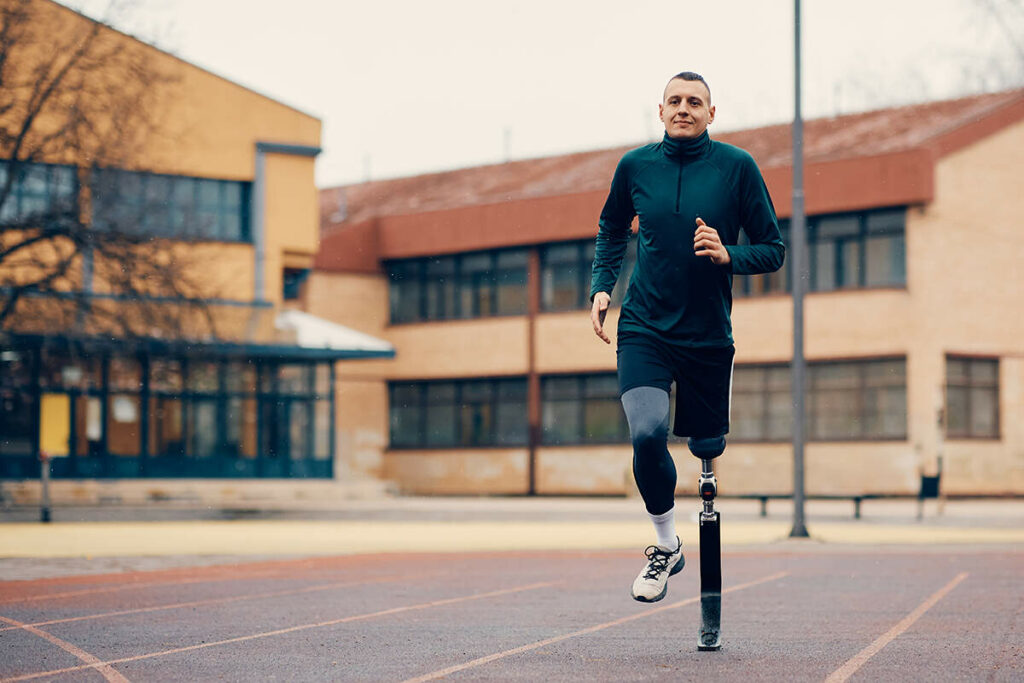
The journey of rehabilitation and adapting to life with a prosthetic limb is unique to each individual. The typical duration for an individual to adapt to life with a prosthetic limb is generally between two and six months. Both physical and occupational therapies are vital in this process as they assist in weight shifting, prosthetic gait training preparation, and educate on residual-limb care.
Physical Therapy
Physical therapy is vital in strengthening the residual limb. It involves:
- Stretching
- Exercise to enhance its function
- Reduce the risk of overuse
- Prepare the individual for prosthetic gait training.
Physical therapy can enhance the performance of activity level tasks and mobility in amputees by addressing limitations at the impairment level and assisting them in achieving independence through an effective gait. This rehabilitation process is crucial in achieving a comfortable and functional fit of the prosthetic limb and enhancing the quality of life of the amputee.
Occupational Therapy
Occupational therapy plays a significant part in the rehabilitation of amputees. It plays a pivotal role in building tolerance for the prosthesis and acquiring the necessary skills to efficiently integrate it into daily activities.
Occupational therapy can enhance the quality of life for an individual with a prosthetic limb by offering assessment and guidance to enhance performance, promote independent problem-solving, and optimize independence in daily activities. The duration for an amputee to adapt to daily activities with the assistance of occupational therapy can vary depending on individual circumstances.
Limb Difference and Public Perception
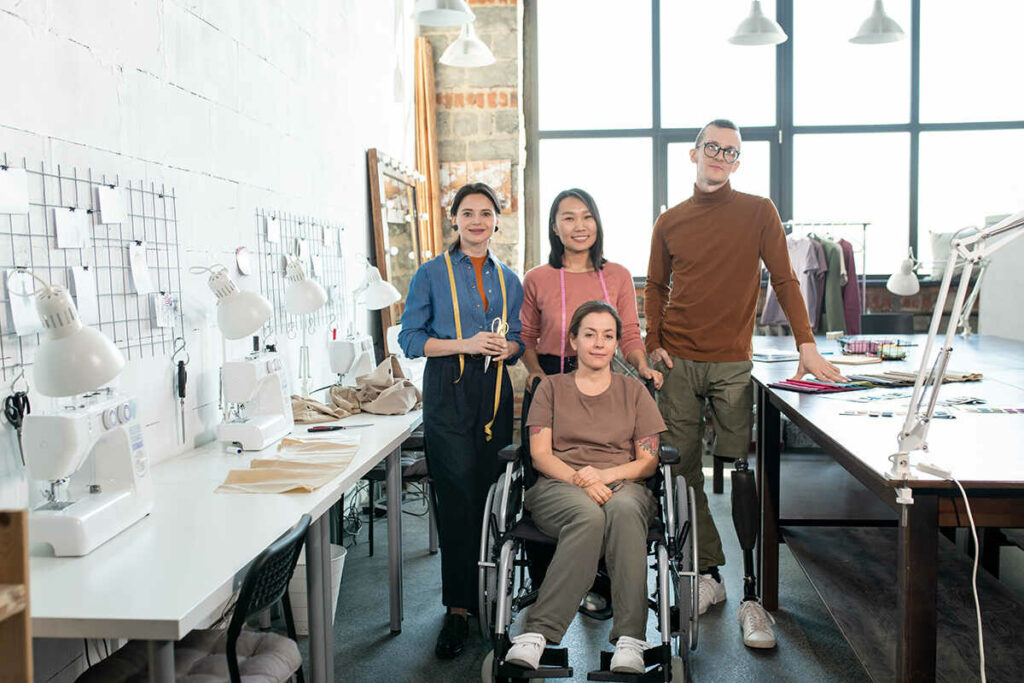
Public perceptions can significantly influence individuals with limb differences. Following an amputation, individuals may develop a more favorable view of their limb difference, particularly if they find relief from pain post-procedure. However, societal attitudes towards individuals with prosthetic limbs may be influenced by the visual appeal of the prostheses.
Prostheses with a realistic or expressive design have been found to have a favorable effect on attitudes, while unattractive prostheses may have a negative impact on wellbeing.
Educating Others
Education about limb differences helps to:
- Normalize the conversation
- Increase awareness
- Dispel misinformation
- Reduce stigma
This is a crucial component in the transformation of societal perceptions and the enhancement of the everyday experience of individuals with limb differences.
Education can contribute to challenging stereotypes about individuals with limb differences by raising awareness, cultivating empathy, and advocating for inclusivity. Through education, misconceptions can be dismantled, biases can be confronted, and a more welcoming and supportive societal environment can be fostered.
Empowering Amputees
Encouraging amputees to accept their limb difference and advocate for themselves can challenge stereotypes and enhance public perception. Embracing limb difference is of significant importance for amputees as it cultivates a positive self-image, which is vital for personal adaptability, resilience, and advocacy.
Empowerment programs for amputees hold substantial importance as they provide education, training, and mentorship. These programs contribute to personal growth, skills development, and community building, all of which are essential for self-advocacy and empowerment.
Glossary
Abduction: Movement of a limb or body part away from the body’s central axis, potentially affecting gait and mobility, particularly after losing a lower limb—contrast with adduction.
Amputee Coalition (Amputee Coalition of America): Established in 1986, this organization focuses on empowering individuals with limb loss through education, support, advocacy, and promoting prevention of limb loss.
Accessible: Easily reachable and usable by individuals with disabilities, including buildings, work environments, and services.
Acquired Amputation: Removal of limbs due to illness or injury.
ADA (Americans with Disabilities Act): Legislation from 1990 prohibiting disability-based discrimination in employment, benefiting those with disabilities or associations with disabled individuals.
Adherent Scar Tissue: Scar tissue that binds to underlying structures like muscle or bone, potentially causing discomfort or restricted movement; often treated with massage to alleviate irritation.
ADL (Activities of Daily Living): Everyday tasks such as cooking, eating, washing, dressing, personal hygiene, and transportation, including work-related and recreational activities.
Avocation: Leisure activities or hobbies.
AE (Above-the-Elbow): An amputation level at the upper arm.
AFO (Ankle-Foot Orthosis): A support device covering the lower leg and foot.
AK (Above-the-Knee): An amputation level at the upper leg.
Alignment: The positioning of a prosthetic socket in relation to body weight and prosthetic components, adjustable to meet individual needs.
Ambulation: The act of walking or moving, a primary focus in lower extremity amputee rehabilitation.
Amelia: A medical term for being born without one or more limbs, potentially due to genetic or environmental factors.
Amputation: The removal or loss of a limb or part thereof.
Anterior: Referring to the front part of a foot or shoe.
AOPA (American Orthotic and Prosthetic Association): Founded in 1917, a national organization dedicated to supporting orthotic and prosthetic professionals.
Architectural Barrier: Physical obstacles such as stairs or ramps that hinder mobility for people, especially those using wheelchairs.
Assistive/Adaptive Equipment: Tools aiding in mobility or daily activities, like ramps, grab bars, modified vehicles and homes, and special utensils.
Atrophy: The decrease in size or wasting away of a body part due to reduced use or function.
BAK (Bilateral Above Knee): Referring to amputations above both knees.
BE (Below-the-Elbow): An amputation level between the wrist and elbow.
Bilateral Amputee: An individual with amputations on both arms or legs.
Biomechanics: The application of mechanical principles to human movement.
BK (Below-the-Knee): An amputation level between the ankle and knee.
BOC (Board for Orthotists/Prosthetists Certification): A certifying body for orthotists and prosthetists and their facilities.
Body-Powered Prosthesis (Upper Extremity): An arm prosthesis powered by upper body movements, operated by a harness and cable system.
CAD/CAM (Computer-Aided Design and Manufacturing): Use of computers for designing and creating prosthetic and orthotic devices, including 3D printing.
CAPO (Canadian Association of Prosthetists and Orthotists).
Causalgia: A chronic burning pain often resulting from nerve injury.
Check or Test Socket: A temporary, often transparent prosthetic socket for evaluating fit and function.
Chopart Amputation: A mid-foot amputation preserving a weight-bearing stump, named after François Chopart.
C-Leg: A type of prosthetic knee with microprocessor-controlled swing and stance phases, offering smoother walking.
Codes (HCPCS, CPT, ICD10, A,K, L-Codes): Diagnostic and billing codes used in healthcare for identifying provided services and devices.
Comorbidity: The coexistence of multiple diseases, potentially affecting treatment and recovery in orthotic and prosthetic care.
Congenital Amputee: An individual born without one or more limbs, technically not classified as an amputee but limb-deficient.
Congenital Anomaly: Birth defects such as missing or underdeveloped limbs.
Congenital Deficiency: A condition where a limb fails to develop normally from birth.
Contracture: Muscle tightening around a joint, limiting movement and muscular balance.
Control Cable (Bowden Cable): A cable system used in prosthetic arms, inspired by aircraft technology.
Contralateral: Pertaining to or affecting the opposite side of the body.
Compression Garments: Orthotic clothing providing graded compression for swelling control and circulation improvement.
Copay (Copayment): A payment by a health service beneficiary, in addition to the amount covered by insurance.
Cosmesis: The external, aesthetic covering of a prosthesis, often made from foam or rubber-like materials.
CP (Certified Prosthetist): A professional who meets established certification standards in prosthetics.
CPO (Certified Prosthetist/Orthotist): A professional certified in both prosthetics and orthotics.
Custom Fit: Tailoring a device to fit an individual’s unique anatomy.
Custom Shaped Cover: An inner cover designed to mimic the shape of a missing limb.
Debridement: Surgical removal of dead, damaged, or infected tissue.
Deductible: The prepayment amount before an insurance plan begins covering costs.
Definitive Prosthesis: A final prosthesis fitted after temporary socket use, designed for comfort, fit, function, appearance, and durability.
Desensitization: Techniques to reduce sensitivity in a residual limb, including massage and temperature application.
Diabetic Amputation: An amputation due to complications from diabetes, such as neuropathy or ulcers.
Diabetic Footwear: Specially designed shoes and socks for diabetic patients to prevent foot injuries.
Disarticulation: Amputation through a joint without cutting bone.
Distal: Referring to the farthest end from the body’s central part.
Distal Muscle Stabilization: Retaining functioning muscle during amputation for strength and circulation.
Donning and Doffing: The process of putting on and removing a prosthesis.
Dorsiflexion: Upward movement of the foot or toe towards the body.
Durable Medical Equipment (DME): Home-use medical devices like crutches or wheelchairs.
Dysvascular Amputation: Amputation due to poor blood flow to a limb.
Edema: Tissue swelling due to fluid accumulation.
Elastic Wrap: A bandage used to reduce swelling and prepare the residual limb for a prosthesis.
Endoskeletal Prosthesis: A prosthesis with adjustable components inside a soft covering.
Energy Storing Foot: A prosthetic foot with a flexible heel that stores and releases energy during walking.
Exoskeletal Prosthesis: A hard, hollow, non-adjustable weight-bearing prosthesis.
Extension Assist: A device aiding the swing phase of a prosthetic limb during walking.
Eversion: Turning the foot outward.
Extremity: Refers to limbs, typically arms or legs.
Forequarter Amputation: Removal of the arm, shoulder, clavicle, and scapula.
Foreshortened Prostheses (Stubbies): Customized prostheses with no articulated joints, used during early rehabilitation stages.
Functional Prosthesis: A device designed primarily for assisting in bodily functions like support or stability.
Gait: An individual’s specific manner of walking.
Gait Training: Teaching how to walk with a prosthesis, involving coordination, balance, and endurance.
Hand/Mitt: A terminal device replacing the hand, either passive or active.
Hard Socket: A rigid prosthetic socket.
Heel Strike: The initial contact of the heel with the ground during walking.
Heterotopic Ossification (HO): The abnormal growth of bone in muscles and tissues, common after trauma or surgery.
Hip Disarticulation (HD): Amputation at the hip joint, preserving the pelvis.
HKAFO (Hip-Knee-Ankle-Foot Orthosis): A device covering the hip and leg, aiding in stability and gait.
HP (Hemipelvectomy): Similar to hip disarticulation but includes partial removal of the pelvis.
Hybrid Prosthesis: A combined prosthetic device, often used for those with upper arm amputations. It typically features a body-powered elbow and a myoelectric terminal device, such as a hook or hand.
Hypertrophy: The increase in cell size leading to tissue or organ enlargement. This muscle enlargement can impact the fit and function of prosthetic devices, contrasting with atrophy.
IAOP: Stands for the International Association of Orthotics and Prosthetics.
Ilizarov Method: A surgical technique for bone lengthening, deformity correction, and healing complex fractures, using an external fixator.
Insurance: Refers to insurance providers.
IPOP: Immediate Post-Operative Prosthesis; a temporary prosthesis fitted right after amputation to control swelling, reduce pain, and start early mobility training.
Ischemia: A localized anemia due to blood supply blockage, often seen in those with poor vascular health or diabetes.
Ischial Containment Socket: A socket design that holds the Ischial bone to prevent lateral movement and enhance walking efficiency, though it may require an adjustment period for comfort.
Ischial Tuberosity: The bone protruding from the back of the pelvis, often becoming sore after prolonged sitting on hard surfaces.
Ischium: The lower part of the hip bone, prone to soreness when seated on hard surfaces for long.
ISPO: International Society for Prosthetics and Orthotics, dedicated to advancing the prosthetics and orthotics field since the 1970s.
KAFO: Knee-Ankle-Foot Orthosis, a device covering the thigh to foot.
KD: Knee Disarticulation; amputation through the knee joint.
Kinesiology: The scientific study of human movement and muscle function.
Lateral: Referring to the side, away from the body’s mid-line.
LEA: Lower Extremity Amputation/Amputee acronym.
Liner: Roll-on liners used in prosthetics for suspension, comfort, and accommodating limb volume changes.
Local Coverage Determinations (LCD): Medicare’s specific service and product coverage rules, often followed by private insurances.
LSO: Lumbosacral Orthosis, a device supporting the lower back.
Manual Locking: A user-operated mechanism for locking prosthetic devices in place.
Medial: Movement towards the body’s central plane.
Medicaid: U.S. public health insurance for low-income individuals and families.
Medicare: Government health insurance, covering part of approved DME costs, subject to a deductible.
Microprocessor-Controlled Knee: Advanced prosthetic knees with computerized control for natural gait.
Modular Prosthesis: Customizable artificial limbs with interchangeable components.
Multiaxis Foot: A prosthetic foot design allowing for more natural movement on uneven surfaces.
Myodesis: Surgical anchoring of muscles to bone ends.
Myoelectrics: The use of muscle-generated electrical signals to control prosthetic devices.
Myoplasty: Surgical technique of attaching muscles to opposing muscles.
Neuroma: Painful nerve growth at amputation sites, sensitive to prosthetic pressure.
Neuropathy: Degenerative nerve conditions, often leading to sensation loss, common in diabetics.
Nudge Control: Mechanical switch operating prosthetic joints.
Nylon Sheath: A sock-like layer for comfort and sweat absorption on residual limbs.
Occupational Therapy (OT): Training for daily living activities, particularly for those with disabilities.
O&P: Orthotics and Prosthetics abbreviation.
Orthosis: Devices for body support, protection, or function enhancement, like braces.
Orthotics: The field of creating and providing orthotic devices.
Orthotist: A professional specializing in designing and fitting orthotic devices.
Osseointegration: Bone’s integration with titanium implants, a concept pioneered by Ingvar Bränemark.
Outer Protective Cover: Covers for prosthetics, often skin-toned, for element protection.
Part B Medicare Medical Insurance: Covers specific outpatient services and supplies, including orthotics.
Partial Foot Amputation: Amputations involving parts of the foot, comparable to Chopart amputations.
Partial Suction: A socket modification for AK prostheses allowing for sock use.
PFFD: Proximal Femoral Focal Deficiency, a congenital limb development anomaly.
Phantom Pain: Pain sensations originating from amputated limbs.
Phantom Sensation: The feeling of a non-existent limb’s presence, often with tingling or itching.
Phocomelia: A congenital condition with missing limbs and hands/feet attached directly to the torso.
Physiatrist: A rehabilitation medicine doctor focusing on neuromuscular, musculoskeletal, and vascular disorders.
Physical Therapy (PT): Rehabilitation therapy focusing on major motor functions and prosthetic mobilization.
Pistoning: The movement of the residual limb inside the prosthetic socket during walking.
Plantar: The bottom part of the foot.
Plantarflexion: Downward foot/toe movement, akin to pressing a gas pedal.
Ply: The thickness measurement for stump sock material, used for socket fitting.
Ply Sock: Socks made of wool or cotton for residual limb volume adjustment.
Pneumatic/Hydraulic Resistance: Technology in prosthetic knees for controlled walking speed.
Polycentric: Referring to multiple-axis joints, beneficial for long residual limbs.
Posterior: The back side of a body part.
Prehension: The hand’s ability to hold, grasp, or pinch.
Preparatory Prosthesis: A temporary limb replacement used during the early rehabilitation stages.
Pressure Points: Areas on the limb or skin where prosthetics may cause pressure and injury.
Prosthesis: An artificial body part, such as a limb, for functional replacement.
Prosthetics: The profession focused on providing artificial limbs for those with limb loss or congenital differences.
Prosthetist: A specialist in designing, fitting, and maintaining artificial limbs.
Proximal: Closer to the body’s central part, opposite of distal.
Pylon: A support shaft in prosthetics, connecting the socket or knee unit to the foot.
Range of Motion: The extent of movement a limb can achieve in a particular direction.
Reattachment Surgery: Surgical procedure for reattaching severed limbs, involving artery connection and tissue grafting.
Rehabilitation: The process of helping an individual regain functional independence after injury or illness.
Residual Limb: The remaining part of a limb post-amputation.
Revision: Surgical alteration of the residual limb.
RGO: Reciprocating Gait Orthosis, assisting paralyzed individuals in walking.
Rigid Dressing: A protective orthosis for residual limbs, applied post-surgery.
SACH Foot: A prosthetic foot designed for moderate to low activity levels, featuring a wood core and rubber shell.
Same and Similar: A policy limiting reimbursement for repeated services within a certain period.
SD: Shoulder Disarticulation; amputation through the shoulder joint.
Shrinker: An elastic device for shaping or reducing swelling of the residual limb.
Shuttle or Pin Lock: A locking mechanism for securing the residual limb in the socket.
Single Axis Foot: A prosthetic foot with a hinge for basic ankle movement.
Single Axis Knee: A prosthetic knee with minimal friction and free swinging motion.
Socket: The part of a prosthesis enveloping and attaching to the residual limb.
Social Worker: A professional providing support and coordination for post-hospital transition.
Soft Socket: A cushioned inner liner for the prosthetic socket.
Split Hooks: Terminal devices with hook-shaped fingers, operated by harness systems.
Stance Control Knee: Prosthetic knee joints providing stability during key walking phases.
Stance Flexion: Mimics natural knee bending at heel strike.
Shorties/Stubbies: Foreshortened prostheses used during initial rehabilitation.
Stockinette: A tubular cotton or nylon material.
Stump: An outdated term for a residual limb.
Suction: A suspension method using negative pressure in a socket.
Suction Socket: A socket design for AK amputees, using negative pressure for suspension.
Supercondylar Suspension: A prosthesis attachment method using bony prominences for clamping.
Suspension System: Various mechanisms for securing a prosthesis to the residual limb.
Swing Phase: The prosthetic movement phase from full flexion to extension during walking.
Switch Control: A control switch for electronic prostheses.
Symes Amputation: An ankle joint amputation retaining the heel pad for weight-bearing.
Temporary prosthesis: Crafted after amputation once the suture is strong, this is a cost-effective prosthesis. It’s used for early gait training and assists in adapting to limb shrinkage.
TENS Unit: A compact, portable device powered by batteries. It involves placing electrodes on the skin near pain areas, connected to the unit, to interrupt pain signals.
Terminal Devices: Attachments for upper limb prostheses at the wrist, enabling functions like gripping and releasing.
TES Belt: A waist-worn suspension system for above-knee prostheses, made of neoprene or Lycra, fastening with Velcro. It aids in extra support and controls rotation.
Telemedicine: Virtual medical appointments compliant with HIPAA, qualifying as in-person visits for insurance purposes.
Custom Therapeutic Shoes: Shoes tailored for specific medical needs, constructed over a modified cast of the patient’s foot, available in custom-molded or custom-made styles.
Therapeutic Recreation: Rehabilitation through guidance in resuming leisure activities.
TLSO: A full torso encompassing orthotic device for thoracolumbar-sacral support. Also involves techniques for transitioning between different positions.
Transhumeral Prosthesis: A limb replacement from below the shoulder to the hand for above-elbow amputations, customized in power and control based on individual needs and objectives.
Transmetatarsal Amputation: Surgical removal of foot parts at the metatarsal bones.
Transtarsal Amputation: Amputation involving the tarsal bones of the foot.
Traumatic Amputation: Limb loss due to injury or accident.
Unilateral Amputation: Amputation affecting one side of the body, with the other side being sound or bilateral if both sides are affected.
Upper Extremity Amputation: Refers to amputations involving the arm or shoulder.
Van Ness Rotationplasty: A surgical reconstruction using the ankle as a knee replacement, suitable for those who would otherwise need above-knee amputation, facilitating better mobility.
Variable-Volume Socket: A two-piece, lightweight, custom-fit socket for prostheses, allowing adjustment and reducing the need for frequent replacements.
Vascular Amputation: Amputation due to inadequate blood supply, caused by various medical conditions like diabetes, heart disease, or arterial problems.
Vocation: Refers to one’s job or profession.
Voluntary-Closing Devices: Prosthetic terminal devices that close via controlled cable tension, allowing proportional grip strength.
Voluntary-Opening Devices: Prosthetic terminals that open through body movement and close with elastic bands or springs.
WHO (Wrist-Hand Orthosis): A device supporting the wrist and hand.
Wrist Unit: A prosthetic component enabling the interchange, positioning, and locking of terminal devices.
Wrist Disarticulation: Surgical removal at the wrist joint.
Frequently Asked Questions
What is a residual limb?
A residual limb, also known as an amputation stump, is the portion of the arm or leg that remains after an amputation. Surgeons aim to preserve as much length as possible.
How do you assess residual limbs?
When assessing residual limbs, doctors usually conduct a physical exam to check for skin breakdown, pressure sores, and bone issues, as well as use imaging tests and blood tests if necessary. Traditional clinical assessments also consider limb dimensions, joint mobility, vascular circulation, neurological condition, shape, skin condition, scar, soft tissue firmness, and the condition at the end of the limb.
What is it called when someone is born without a limb?
When someone is born without a limb, it is called congenital amputation or amelia. It can be caused by genetic or environmental factors and results in the absence or partial absence of one or more limbs.
What do you call someone with a missing limb?
A person with a missing limb is called an amputee. Some amputees use artificial limbs to aid in mobility and daily activities.
How can amputees manage residual limb pain and phantom limb pain?
Amputees can manage residual limb pain with medical treatments and home remedies, while addressing phantom limb pain may require a combination of medical treatments, physical therapy, and psychological support.


